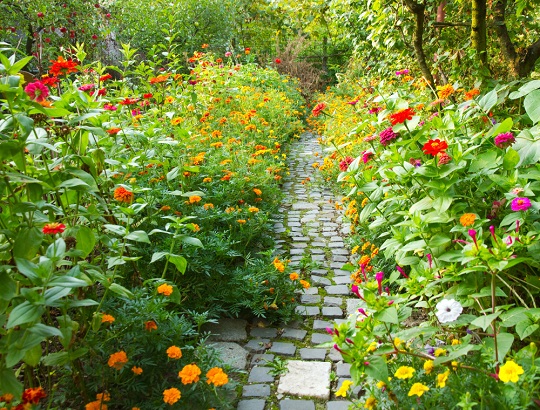 This point is undoubtedly very important for those who are starting; it is not possible to develop a good project without technical knowledge of other areas that talk about landscaping; it is important to emphasize this because many do not have the proper notion of what valuable it is to always be updated and studying these other fields. As examples, we can mention engineering, botany, architecture, biology, and agronomy.
This point is undoubtedly very important for those who are starting; it is not possible to develop a good project without technical knowledge of other areas that talk about landscaping; it is important to emphasize this because many do not have the proper notion of what valuable it is to always be updated and studying these other fields. As examples, we can mention engineering, botany, architecture, biology, and agronomy.
Every landscaper should have this notion so as not to be caught off guard; remember to always be aware of everything that is part of this professional field.
Practical errors
Errors made in the exercise of the function are normal at the beginning; after all, it is not easy to convert theoretical knowledge into practice in a 100% faithful way, even more so as a novice or, better yet, a gardener.
Below, we will see some very simple basic tips but of great value for those who are starting; take a look:
Adequate irrigation:
One of the most basic principles of landscaping and gardening is the correct dosage of water in the crop, which is why it is important to know how to measure the amount when watering and how to identify when the plant needs it or when the plant is showing signs of excess water.
Usually, when they show signs of excess, they turn yellow, wither, and fall off; otherwise, when there is a shortage, they tend to appear dry and also fall off.
It is important to point out the differences in knowing the procedure; many people think that when the plant looks fragile, you necessarily have to water it, which is a mistake; be careful.
Adequate lighting:
The issue of luminosity is also crucial in cultivation, and we must pay attention to how the foliage develops and its direction of growth. Generally, when the plant presents discoloration and abnormal elongation, it is a sign that the environment does not offer the ideal luminosity for its complete and healthy development.
Choice of species:
Choosing the correct species is crucial for the success of the project since it is of utmost importance that the plant is adaptable to the climate present in the place chosen for the development of the work. Always be aware of the compatibility of the species with the climate; otherwise, in a short time, the entire project can be lost, and that is not good for the reputation of those who are starting. So stay tuned and take the time to study this determining factor.
 Conscious pruning:
Conscious pruning:
The drier the climate, the more difficult it will be for fungi and other diseases to contaminate the plant; therefore, give preference to pruning in the winter months (May, June, July, and August). If you live in a region without well-defined seasons, try to observe the best time for pruning, and of course, always take into account the humidity mentioned above.
Perspective Lines:
A perspective line is an alignment technique based on a defined reference point. Well applied, it generates a beautiful, harmonious effect on the project, and it is undoubtedly worth its application.
Your design must convey the proper perspective conditions for size, position, and depth. This will make your project stand out from others who do not master this technique.
Persistence and willpower
This is perhaps the most valuable advice we can convey to you: persistence and willpower are extremely important in any professional area. If you want to pursue a career in landscaping, know that many obstacles will stand in your way until you master the activity, so don’t lose focus and know that you will reap the rewards in the future; just always seek to improve and never stop, study, That is the secret of success, we guarantee it.…
Read More